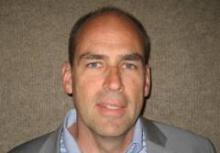MINNEAPOLIS – After 12 weeks of treatment with a novel agent, narcolepsy patients showed an 86% improvement from baseline in scores on the Clinical Global Impression-Change scale, compared with 38% of placebo patients. The findings were presented at the annual meeting of the Associated Professional Sleep Societies.
JZP-110 (formerly ADX-N05), a wake-promoting agent with dopaminergic and noradrenergic activity, reduced symptoms in a phase IIb randomized, double-blind, placebo-controlled trial of 93 patients with narcolepsy, according to Dr. Jed Black of the Stanford (Calif.) Center for Sleep Sciences and Medicine in Redwood City, and a part-time employee of Jazz Pharmaceuticals in Palo Alto.
"This is a wake-promoting agent with a mechanism of action that is somewhat distinct from those that are currently available for treating excessive daytime sleepiness in narcolepsy, with what appears to be a robust and fairly consistent effect across studies to improve alertness ... and also to impact narcolepsy globally," he said.
At week 4, the average change in sleep-onset latency on the Maintenance of Wakefulness Test (MWT) was 9.5 minutes in the active drug group and 1.4 minutes in the placebo group (P less than .0001). The proportion of treatment patients vs. placebo patients with improved Clinical Global Impression – Change scale (CGI-C) scores was 80% vs. 51%, respectively (P = .0066), and Epworth Sleepiness Scale (ESS) scores decreased in the two groups by 5.6 points vs. 2.4 points, respectively (P = .0038).
Additional improvements were noted at 12 weeks, with an average change in sleep-onset latency on the MWT of 12.8 minutes vs. 2.1 minutes (P less than .0001), likely representing a dose response instead of a time-on-treatment response, Dr. Black said.
The researchers randomized 49 patients to placebo and 44 to the active drug. The active drug was initiated at 150 mg/day for 4 weeks, and increased to 300 mg/day for weeks 5-12.
The two primary efficacy endpoints were improvements from baseline in average sleep-onset latency on the MWT and improvements from baseline on the CGI-C; change on the ESS was a secondary endpoint.
The drug might fill an unmet need in narcolepsy patients who do not improve on or cannot tolerate existing treatment options for excessive sleepiness, Dr. Black noted. Additionally, it is not associated with rebound hypersomnia, and limited preclinical data suggest that it may have lower potential for abuse than traditional stimulants, he said.
The study "was exciting in that it presented expanded research on a new wake-promoting compound which likely works differently than currently available wake-promoting agents," session chair Dr. Douglas Kirsch of the Sleep Disorders Service at the Brigham & Women’s Hospital in Boston, said in an interview.
ESS scores fell by 8.5 points in the treatment group vs. 2.5 points in the placebo group (P less than .0001) – putting all of the patients in the active drug group within the normal range
Prolongation of sleep-onset latency with the drug was not affected by whether patients had cataplexy (about a third of cases), said Dr. Black.
Adverse events were more common in the treatment group, and included headache, insomnia, diarrhea, nausea, decreased appetite, anxiety, and irritability. "There was sort of a dose-response on the GI symptoms and...insomnia and also anxiety and irritability," he noted.
Three patients discontinued the drug because of adverse events, compared with two who stopped placebo. Two serious events – acute cholecystitis and conversion disorder (the latter in a patient who had previously experienced this disorder) – occurred in the treatment group, but were deemed unrelated to the drug.
The study was supported by Aerial BioPharma. Dr. Black is a part-time employee of Jazz Pharmaceuticals, which has licensed ADX-N05 from Aerial BioPharma, and other study authors reported associations with the company.


